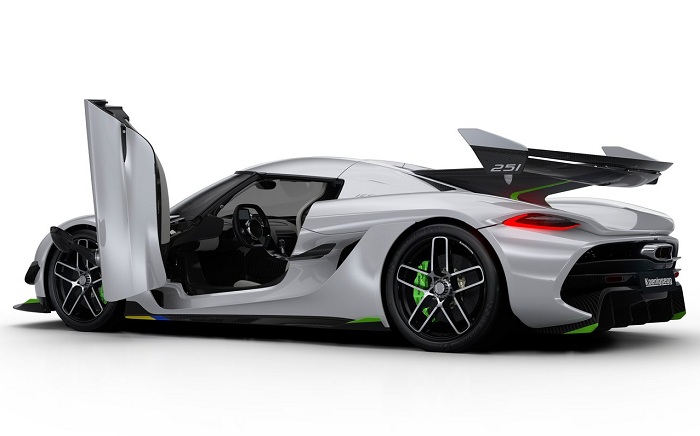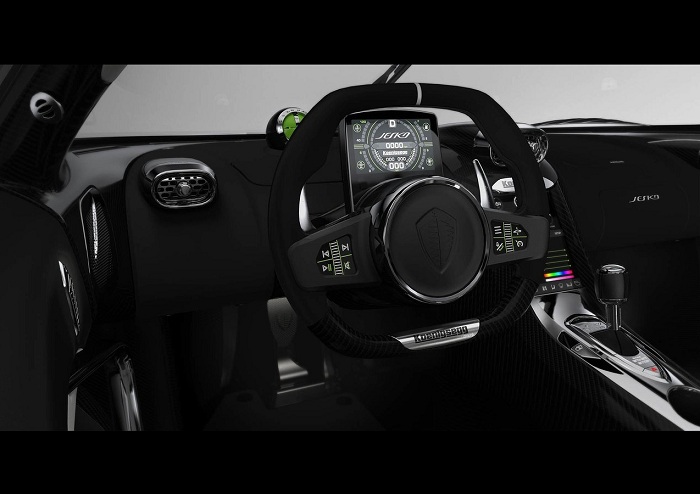Named after the father of company founder Christian von Koenigsegg, the Jesko comes with an overall more evolutionary design, but aided significantly by a series of aerodynamics enhancements such as the deepest front splitter ever fitted to a production Koenigsegg, wider active under-body flaps and a double rear wing that contributes to a downforce of 800kg at 250km/h, and 1 000kg at 275km/h, a 30% increase over the One:1 and 40% more than the Agera RS.

Tipping the scales at 1 420kg and carrying over the Agera’s Autoskin technology that uses electronics to open the redesigned dihedral synchro-helix doors and adjust the hydraulics and active chassis, the Jesko utilises a carbon fibre monocoque chassis like the Agera RS, but which has been stretched by 40mm and enlarged by 22mm to offer more head and legroom.
Equipped with active Triplex dampers, Formula 1-style wishbones, fully adjustable Öhlins shocks and a new adaptive, active rear steering system, the Jesko retains the removable carbon fibre roof and can be had with optional carbon fibre wheels that weighs 5.9kg at the front and 7.4kg at the rear. Standard rubber is Michelin’s Pilot Sport Cup 2 with dry-weather only Pilot Sport Cup 2 R tyres optional.

Along with its aero adjustments, the Jesko’s biggest knockout punch lies at the rear where the fettled version of the twin-turbocharged 5.0-litre V8 benefits from a new in-house designed and built 180-degree flat-plane crankshaft said to be lightest in the world at 12.5kg, a tumble valve on intake and individual pressure sensors on each cylinder to produce a colossal 955kW/1500Nm or 1 193kW when running on E85.
Connected to a brand-new, in-house developed nine-speed dual-clutch gearbox dubbed Light Speed Transmission (LST) which weighs in at 90kg and allows for the shifting from seventh to fourth gear despite the ‘box not being a sequential unit like that of Agera RS, the Jesko is said to be all about performance, though Koenigsegg has declined to provide exact figures. It is however being reported that an even faster model is being developed with the aim of being the first car to crack 300mph (483km/h).

















